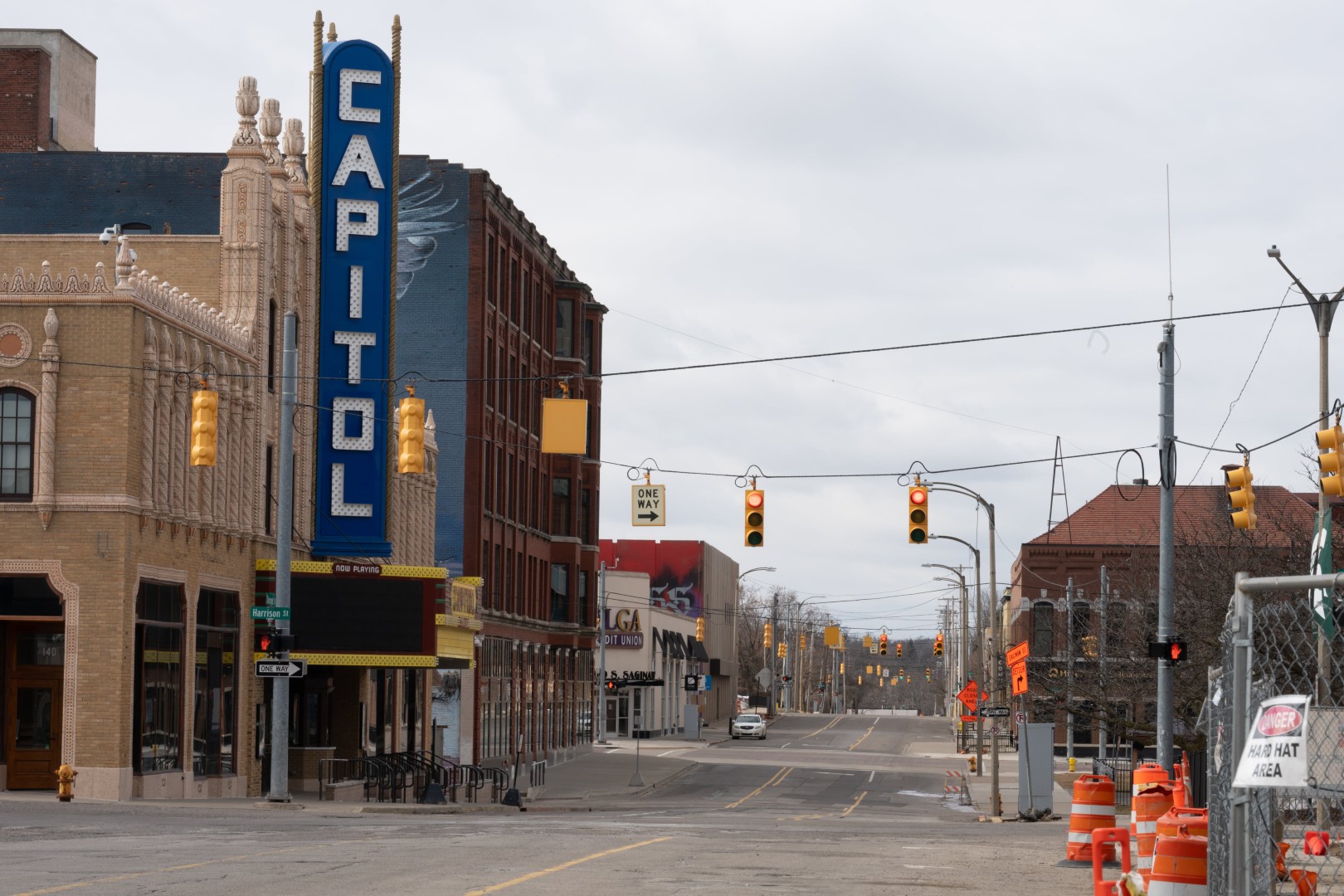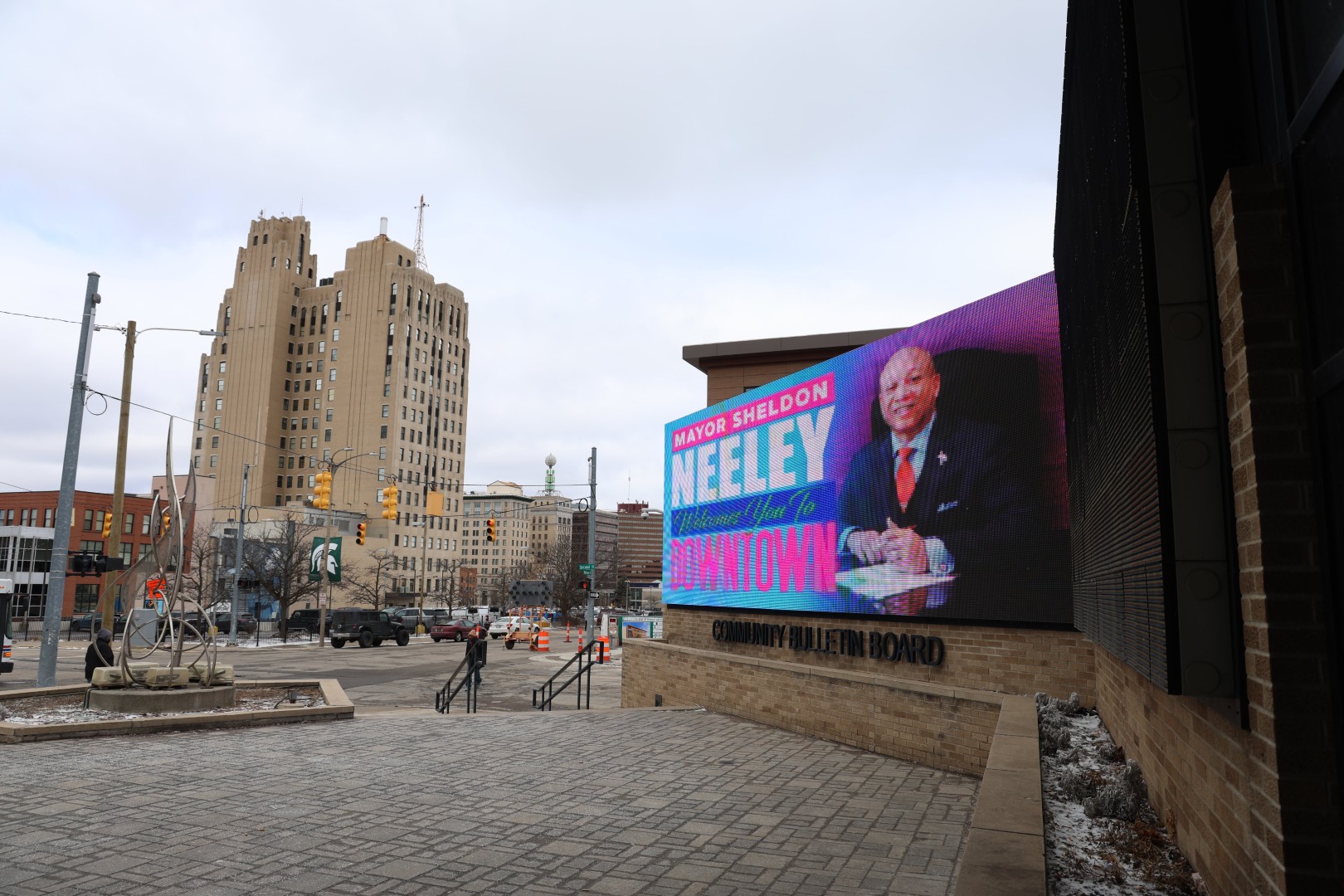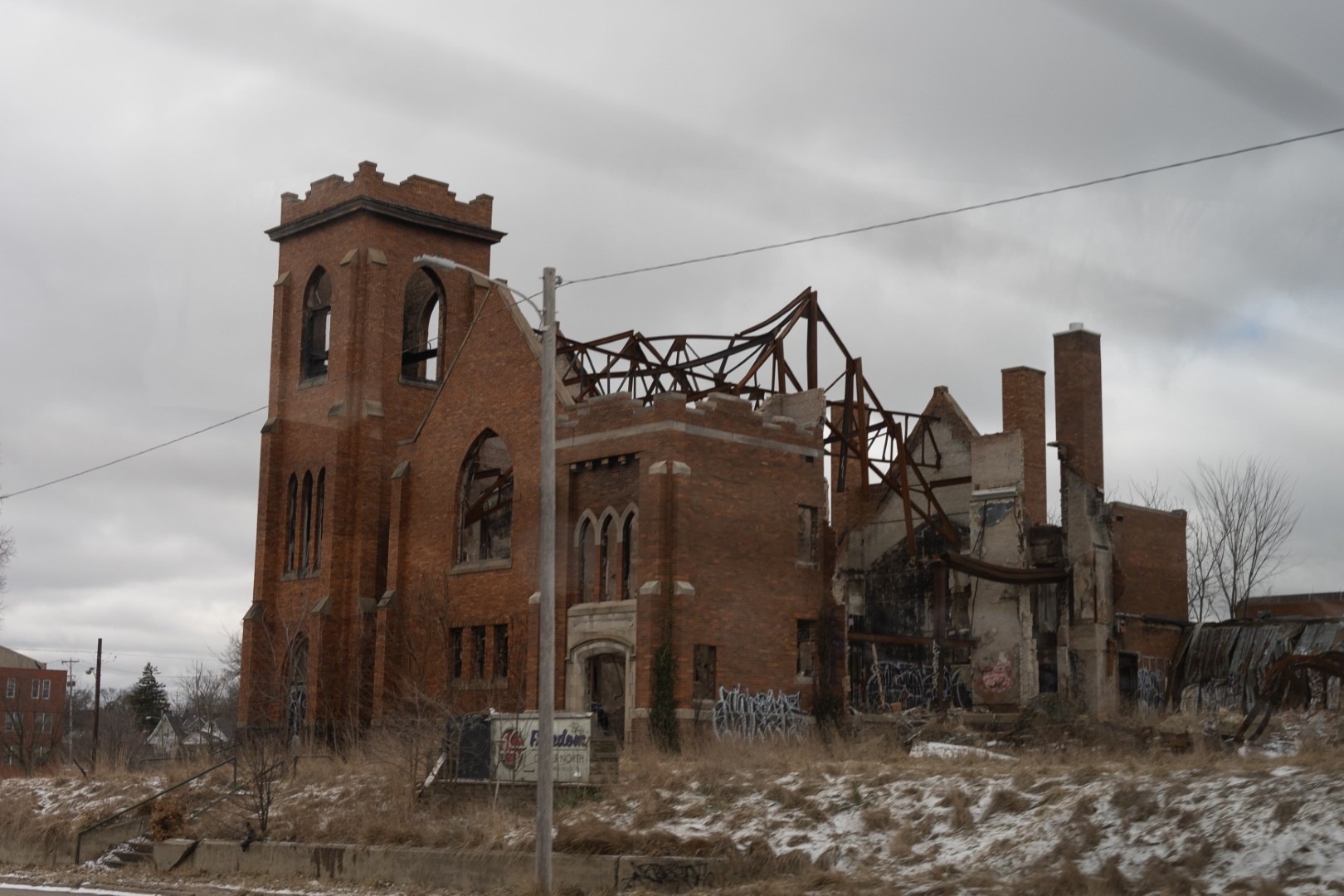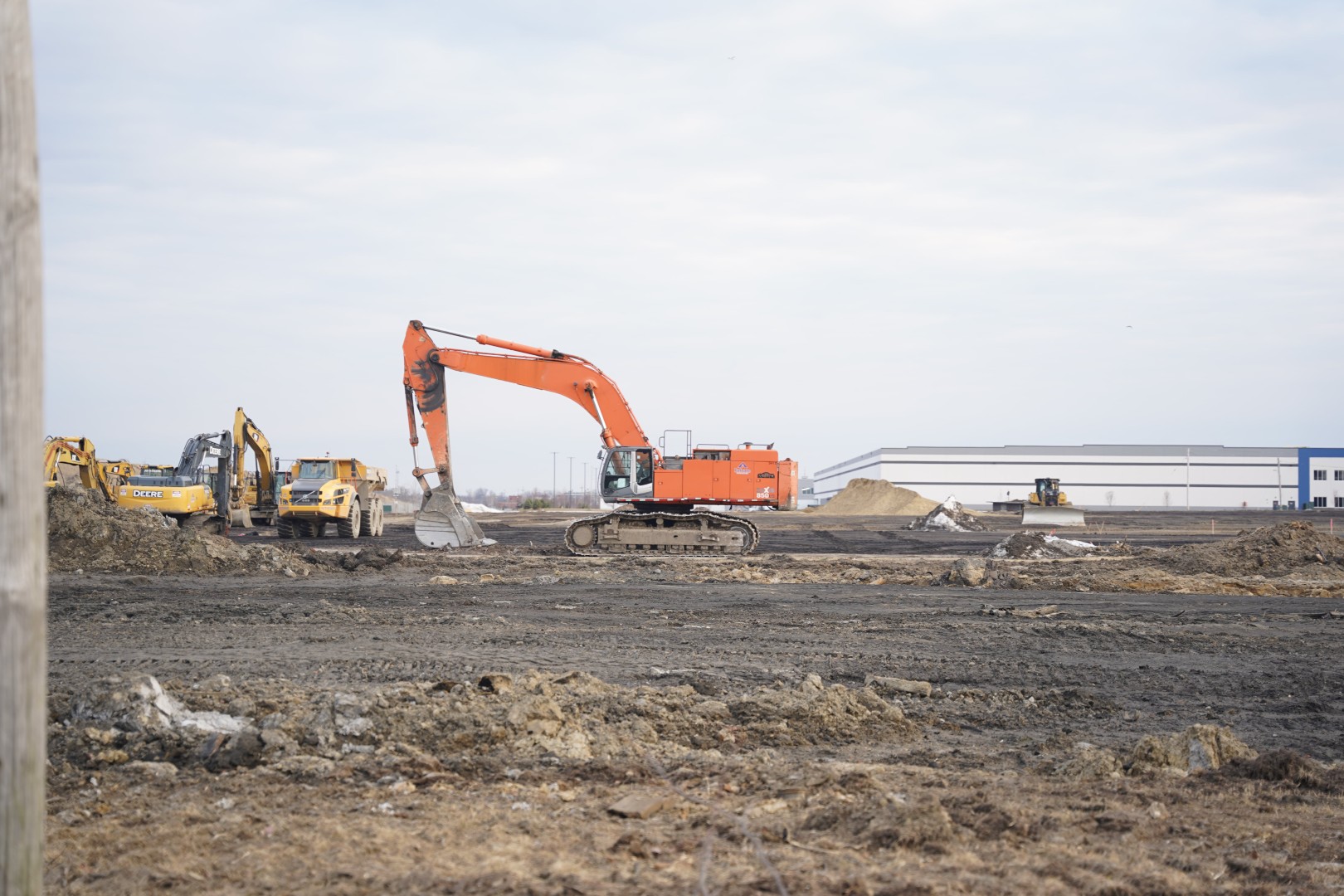
FLINT - It’s 5 p.m. on a dreary day in downtown Flint, and while most workers surrounding the four-way intersection are buttoning up to head home after the workday, Emily Doerr is just getting started.
Owner of Queens’ Provisions, a wine and charcuterie shop and lounge located at the corner of Garland Street and W 2nd Avenue, Doerr is bustling from one thing to the next in her vibrant store just steps away from the now infamous Flint River. While the waterway has come to symbolize pollution, illness and even corruption in this midwest community, for Doerr, it’s simply a backdrop to the city she has poured her hopes and bank account into as the site of her storefront.
“Flint, more than any other urban center in America has an opportunity to be a 21st century place that is mixed income and diverse and environmentally conscious,” she said.

Doerr is not alone in her enthusiasm for what Flint could be. Despite decades of deindustrialization and population decline, investments in the commercial corridors that populate the city center suggest that things are starting to look up.
Flint received over $90 million from the American Rescue Plan Act — a federal Covid relief fund — much of which was spent on economic investment. In his State of the City address in November 2024, Mayor Sheldon Neely spoke forcefully about taking action to eliminate blight, create housing and provide job opportunities: “Block by block, neighborhood by neighborhood, we have achieved a new landscape in our community,” he told a packed City Hall.
So far, $4.15 million has been allocated to community organizations addressing affordable housing needs; another $16 million was assigned to the Genesee County Land Bank to demolish hazardous structures; and thousands went to grants for neighborhood clean-up and alternative use of vacant lots. In 2023 alone, Neely’s administration steered $2 billion toward economic investment.

And while Flint’s unemployment rate is still at 6.1% as of March — which is higher than the national average — it’s less than half what it was in 2019, when it hit 13.9%.
The city’s budget lays out an even clearer picture of how the city is investing in its future. Presented on March 4, it spotlights three goals: rebuild the city of Flint’s residents, businesses and neighborhoods; rebuild the city of Flint for future generations; and rebuild the city of Flint’s government.
“I don’t believe in another silver bullet or some type of White Knight that comes in and saves the town,” said Tyler Rossmaessler, executive director of the Flint Genesee Economic Alliance. “But I do see an opportunity for a large investment, continued growth and diversification of economy.”
The Flint Genesee Economic Alliance is the county’s private non-profit economic development organization that exists to advance the prosperity of residents. The group has facilitated the investment of over $1.73 million in Genesee County economic development projects, creating 152 jobs and awarding $235,000 just to Flint-based small businesses. Its Forward Together vision was developed in 2019 with Genesee County and the city of Flint to create a new shared plan for the economic vitality of the county.
Its goal is to become a “top-five community” in the state based on four factors: jobs, talent, livability and equity. Rossmaessler sees himself as a liaison between companies and the city to facilitate business attraction.
“The public attention [from the water crisis] was a double-edged sword,” he said. “It has a negative definition for the city, but also brought a lot of interest from the federal government, from the state government and from private donations.”
He also emphasized the “good bones” of the city including low property values, which is an incentive for many businesses to relocate.
“You may have heard of Flint, Michigan, or you have a preconceived notion of this community, but let me explain to you why because not everybody understands the opportunity here,” Rossmaessler said.
Key to that opportunity, he and others say, is demolishing unsafe and blighted properties to improve the safety and cleanliness in neighborhoods. The Genesee County Land Bank has secured over $39.5 million to remove up to 1,900 structures. One high-profile demolition in particular includes Old Park UMC Church, a once grand but now deteriorating structure that dominates the north side with a caved-in roof and graffiti-scrawled walls.

Still, thousands of abandoned or empty structures remain in almost every quadrant of Flint, a reality that started with the withdrawal of General Motors from the 1970s into the 2000s. The recession in 2008 exacerbated the blight, devastating the community even more. Over the course of 40 years, tens of thousands of jobs were lost and the population declined from 200,000 in 1960 to fewer than 80,000 today.
A team of researchers from the University of Michigan corroborated this in "A Twenty-year Review of Flint’s Financial Condition,” published in 2022. The report explored the history of disinvestment in the city, highlighting Flint’s long-term financial difficulties.
Also complicating the landscape is that residential and commercial development are intrinsically connected, said Alan Mallach, a senior fellow at the Center for Community Progress, a nonprofit supporting community vacancy, abandonment and deterioration. Beginning in the early 2000s, he has actively worked in Flint to tackle the vacant property issue.
“In many respects, the economic base comes first,” Mallach said. “Without a stronger economic base, there are real limits to what you can do in terms of housing.”
Officials hope the blight removal will stabilize communities and keep neighborhoods beautiful.
“You need to focus on making Flint the place where people want to be,” Mallach said.
Some, however, disagree with this method of revitalization.
Cade Surface, director of Urban Strategies at The Crim Fitness Foundation, a non-profit organization serving to advance the national agenda for improving community health, believes that demolition should not be used as a strategy to stabilize communities.
“As a result of their practices, there’s less,” he said. “They have not even come close to replacing the amount of things that they actively push to remove … without a lot of good reason.”
Surface believes rebuilding basic infrastructure rather than tearing it down is a more productive and regenerative path forward.
“A lot of people think that our city looks like this because the economy tanked, and so this is just the natural process of what a struggling city looks like, and not that this has happened because a lot of money has been invested for our city to look and feel like this,” he said.
In 2017, there were roughly 24,000 vacant properties in the city, or 42% of all properties in Flint. Through demolition efforts set forth in the city’s master plan, the number dropped to 8,496 vacant and/or blighted homes (one out of every four) and 922 buildings (almost one of every two) in 2022. At the time, there were over 16,000 vacant lots in the city, around one of every three properties.
Uptown Reinvestment Corporation, the Genesee County Land Bank and Communities First, Inc. are all major players in the effort to reduce blight and develop downtown Flint and its surrounding neighborhoods. All three receive major donations from the Charles Stewart Mott Foundation.

In 2023, the Mott Foundation, a private non-profit, made $186,771,868 in charitable disbursements, 89.8% of total expenses. More than $80 million was granted to nonprofits and organizations supporting Flint. Since its creation in 1926, it has made more than 5,100 grants totalling almost $1.6 billion to support the city.
Other investors have been prolific as well.
Ashley Capital, a real estate investment company, is redeveloping Flint’s Buick City, the location where General Motors once built automobiles in northeast Flint, into the Flint Commerce Center. The center will be 3.5 million square feet spanning 10 buildings and it will create 3,000 full-time jobs. The first building completed is currently in use by its first tenants who signed in late 2024.

In September 2024, NanoGraf, a battery maker based in Chicago, announced it would be building a new factory in Flint, also at the former Buick City site. The $175 million project received funding from the U.S. Department of Energy under the Bipartisan Infrastructure Law. Not only will it initially create 200 new construction jobs and 150 permanent jobs, but the plant will support the electric vehicle industry, positioning Flint in an essential part of the regional supply chain.
“I dare a company to have the vision and the ability to take advantage of the infrastructure and the good bones that exist here,” Rossmaesler said. “One little pitch we have here is, ‘This is what opportunity looks like.’ Real opportunity is rare and the fact that not everyone recognizes it is the fact that makes it opportunity.”
Doerr has taken advantage of that opportunity. She opened her business in August 2023 soon after starting as director of planning and development for the city of Flint that June. Then she quit in January 2025 to pursue her small business full time. She’s not sure yet she made the right decision, but she’s willing to bet on herself and Flint.
“We as a city have not invested in ‘place’ very well,” Doerr said. “And that is a thing I’m trying to do with Queens’, is provide a place where someone moves to Flint and they’re really pumped to become a regular at Queens’ because it reminds them of a place that they used to hang out in. And whether it’s Ann Arbor or Chicago or New York, which again is a little silly perhaps to say, but it’s my dream.”
On that very day, Doerr signed another three-year lease for her restaurant - a pledge to her faith that Flint’s turning fortune will continue. At least for now.
“I’m committed, right?” she said as she began to prep the lounge for an International Women’s Day-themed trivia night. “My husband and I live here because we want the city to grow.” She’s realistic too, she added. “If the city looks the same in five years, we’re probably going to move. Why stay in a place that’s not going to grow? Why open a business?”
